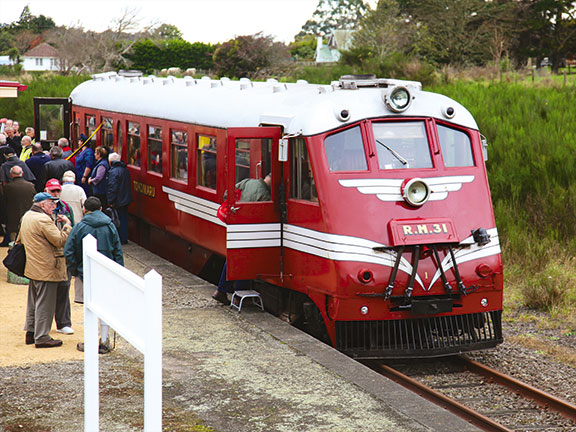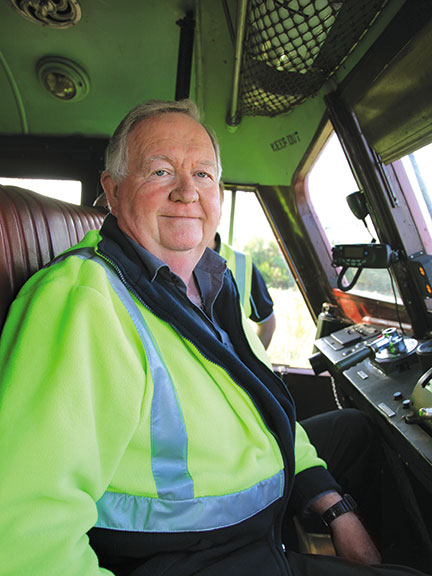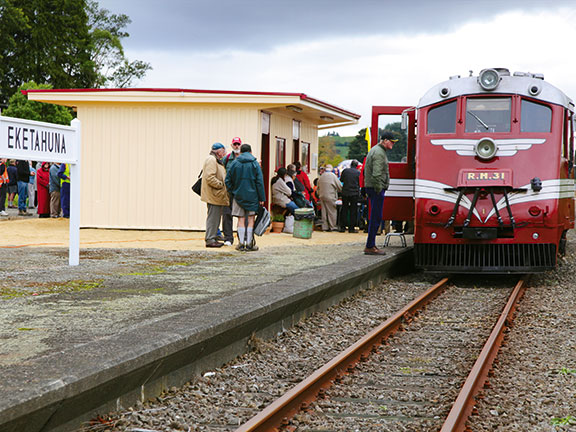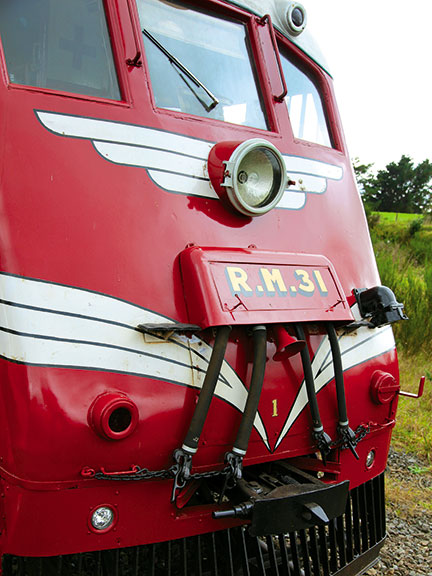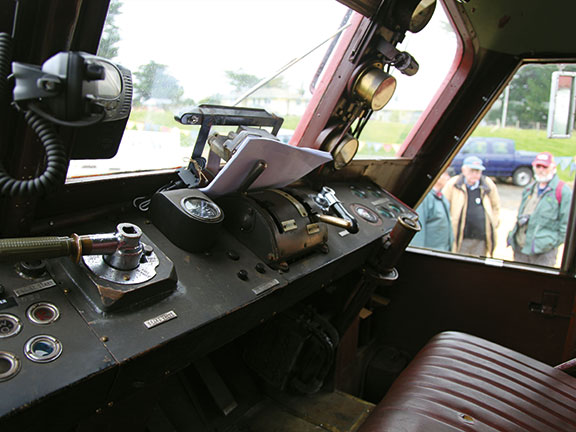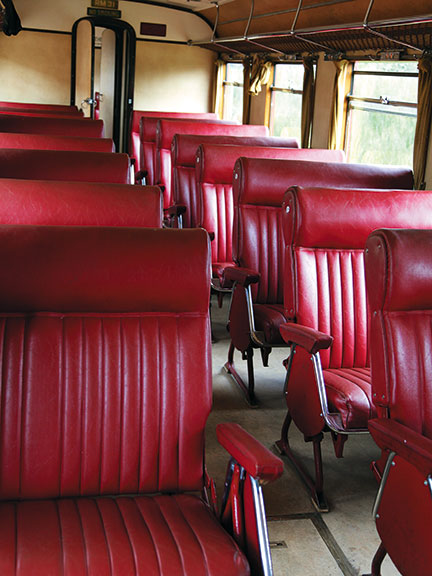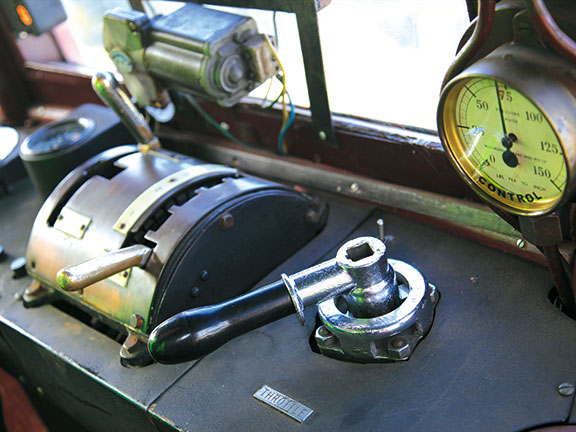Explore: a railcar ride from Pahiatua to Eketahuna
Vivienne Haldane pays tribute to the Pahiatua Railcar Society's restored railcar, RM 121, as she travels the line from Pahiatua to Eketahuna.
"My name is Doug and today I'm your grumpy guard," jokes retired railway guard and restoration enthusiast Doug Johnston, as he announces himself to those of us making the rail trip from Pahiatua to Eketahuna.
The railcar pulls out of the station and soon reaches its authorised running speed of 80kph. In 1940, a Vulcan railcar clocked 125kph on the Midland Line in the South Island. At the time, this was a record speed for trains in New Zealand.
For the uninitiated, a railcar has diesel engines at each end. It moves backwards and forwards like a tram, so there's no need to turn for the return journey.
The car in which we are travelling is a 1938 Standard railcar, acquired in 1996 and fully restored by the Pahiatua Railway Society. Today's excursion is part of the district celebrations to re-open Eketahuna's railway station.
Tickets are clipped and there's a safety briefing. "Don't put your hands out the window. If you want to stop the train, pull the handle down and leave it down: the train will come to a shuddering halt. No smoking in the train folks. In case of an emergency, follow the instructions of your crew."
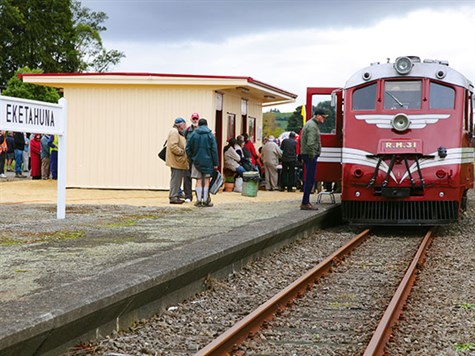
We settle back into the soothing clickety-clack and gaze out at the countryside. Cows barely bat an eyelash as RM 31 Tokomaru rattles past. On the way I notice a few keen trainspotters with their cameras.
Doug was formerly a guard for eight years on the Wairarapa line and has belonged to the Pahiatua Railcar Society for three years. When he retired, he realised he missed the trains, so became a volunteer. "It's like being part of a big family," he explains.
He says that while he takes his responsibility for everyone on the train seriously, the groups have so much fun. "It's the fitters and people on the ground who do all the hard work. I just get to ride the rail and talk to you folks."
We reach Eketahuna and pile out to go and explore the village.
While browsing the shops I meet Michael and Debbie who have travelled from Wellington especially to ride on the railcar. Michael is a railway engineer. He tells me, "I've never been on these railcars so I thought it was a good chance to have a trip in the country. I'm surprised at how smooth the ride is, considering the age of the car."
Back at the Eketahuna Railway Station, speeches have begun and the railcar, lined up at the platform, is very much the guest of honour.
Don Selby who is the president of the Pahiatua Railcar Society praises the restored station. "This is a special day. We are so used to things being closed. This is probably the only station that's been reinstated to its original site."
Rail arrived in the district in 1889 and was an important part of the community until use of the railways began to decline in the 1960s.
Don is a chartered accountant from Pahiatua. He grew up alongside the railway and has been fond of trains all his life. He has been involved in restoration since the 1990s when a friend mentioned he was interested in restoring a railcar. They managed to acquire the remnants of a Wairarapa railcar, RM 5 Mahuhu, and got a team of people on board and set to work. Thus the Pahiatua Railcar Society was formed.
Imagine the society's elation in 2001 when they heard that the two body halves of the rare Drewry Twinset Railcar RM 121 they'd been looking for had survived. One half was discovered in Waitomo and, after some meticulous detective work, the other was located in a quarry in Kerikeri.
What follows such discoveries are the hours spent rebuilding: welding, stripping back, removing unwanted additions (some had been used for accommodation), painting and upholstering to keep them faithful to their original design.
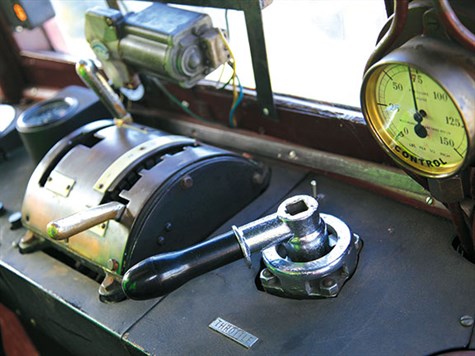
The society, which has about 30 members, is currently restoring two railcars in their workshop beside the Pahiatua Railway Station.
I am introduced to another Doug Johnston — this time the society's operations manager. Doug J is employed by Kiwi Rail in its operations department. He says the aesthetic appeal of the railcars with their white flashes caught his imagination when he was a boy.
"Between 1955 and 1978, the most common railcars were the twinsets. The one we are currently restoring is the last survivor out of 35. We had to claw it back from bits and pieces all over the country. It's very hard work, as well as expensive and time-consuming."
As the day ends, I am beginning to catch on to what their love affair with trains is all about.
The next railcar excursion will be from Pahiatua to Napier for the Mid-Winter Art Deco Weekend, 19-21 July. For more information visit railcars.co.nz
Railcar history in New Zealand
- From 1936 — seven Wairarapa railcars were built at the Hutt Railway Workshops, specifically for use on the Rimutaka Incline between Wellington and Woodville. These were withdrawn in 1957 after the twinsets entered service. The last survivor, RM 5 Mahuhu, has since undergone major restoration at Pahiatua and is near completion.
- From 1938 — six Standard railcars were built at the Hutt Railway Workshops, for service exclusively in the North Island. The first Standard railcar service ran between New Plymouth, Wanganui, and Wellington in 1939. Different heritage train groups in New Zealand have preserved four of the Standard railcars.
- Nine Vulcan railcars built in the United Kingdom entered service on South Island routes in 1940 and ran until 1978. Four survive in the South Island.
- Thirty-five Drewry twinset (dual car) railcars entered service mid-1950s and ran throughout New Zealand. These were withdrawn in 1978.
- Railcars were phased out in the 1970s because of competition from road transport, the age of the railcars, and government policy — which favoured road transport over rail. The last one — a twinset 88-seater railcar — ran from Greymouth to Christchurch in 1978.
- Only three Japanese 1972-built Silver Fern railcars remain in service today. These were purpose built for the Wellington – Auckland daylight service until 1991. Today the 'Ferns' are used for charter work.
For the full article, see issue 118 of Motorhomes, Caravans & Destinations. Subscribe here.

